Lambertville Free Public Library
Our library is conveniently located in the heart of Lambertville, NJ and has proudly served the community since 1882. Our friendly space is the ultimate possibilities place. Patrons can check out new and classic books, bestsellers, current magazines, movies, newspapers, a selection of Spanish language titles, and see microfilms of historical treasures like The Beacon Newspaper Archive.
We have a Children’s room for reading and play and feature a wide range of books for ages 0-teen, including popular bilingual (Spanish) titles to choose.
We are also home to the Michael Lewis Art Book Collection and Gallery where you can view local talent on display.
History of Lambertville Library
The roots of the Lambertville Library reach deep into all facets of Lambertville’s history – its agricultural, industrial, commercial, financial, political, and civic development. Two esteemed, very different community leaders played major parts not only in the growth and prosperity of Lambertville, but also in the library’s origins and in its special surroundings in a historic mansion.
Early History of Lambertville Library
In 1881, 28 leading citizens formed the Stryker Library Association, based on the will of Samuel Davis Stryker, who had left $1000 in 1863 to establish a library “for the benefit of the inhabitants” of Lambertville, but only after those inhabitants raised an equal amount. Contributors to this matching fund, which took 18 years to amass, were all prominent leaders, including Ashbel Welch, Martin Coryell, Alexander H. Holcombe, Warren A. Greene, William McCready, and even two women, Ann Weeden and Caroline W. Corwin. A portrait of Samuel Stryker hangs over the mantel in the library’s main room
Samuel D. Stryker (born 1790 in vicinity of Pittstown, NJ) had operated a general store in Bucks County, PA, then in Flemington, before partnering with his younger brother James (1800-1883) in 1826 to establish a retail business in Lambertville, which operated until 1848. The brothers then entered the lumber business, which brought them both wealth and prominence. In 1858 when the Lambertville Bank was organized, Samuel was chosen as the first president and James as a director, who succeeded his brother as president in 1863.
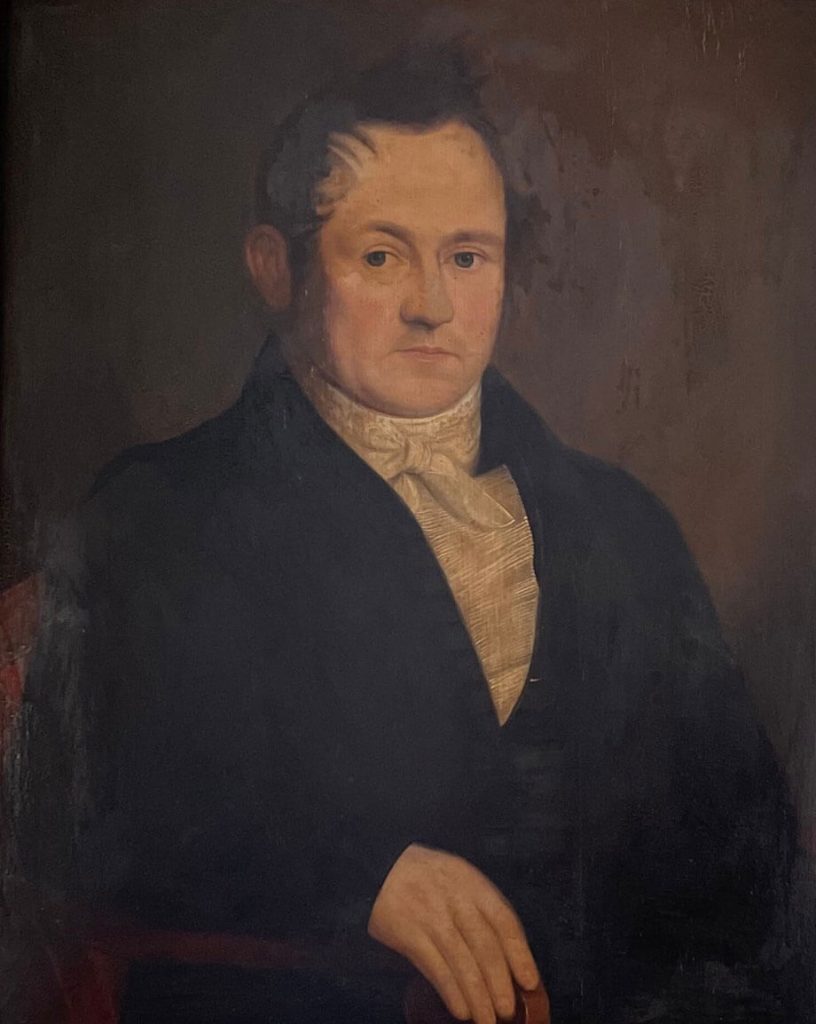
Samuel D. Stryker (1790-1863), by William Bonnell
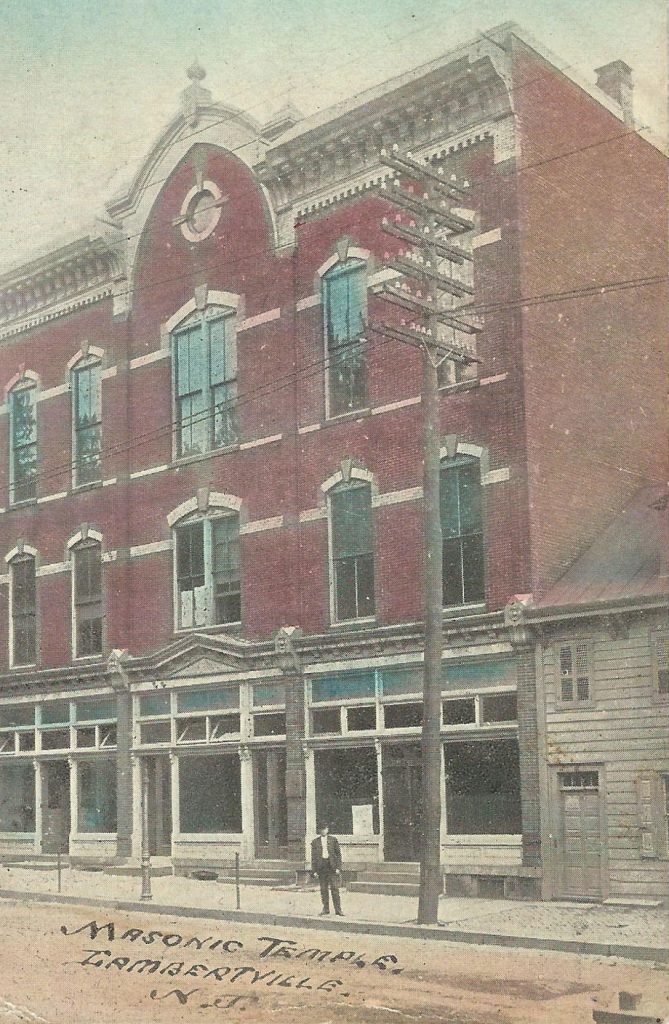 Masonic Hall, c. 1905.
Masonic Hall, c. 1905.On June 21, 1882, the library opened in a room over Cochran’s Drug Store at Union and Coryell Streets, then moved in 1883 to rooms in the Masonic Building at 19 Bridge Street, where the quarterly rent was $25. The library’s collection of about 1300 volumes contained classic literature as well as practical materials for farmers, such as Downing’s “Fruit and Fruit Trees”, Randall’s “Sheep Husbandry”, and Harris’ “Insects Injurious to Vegetation”. A few original holdings stand on a shelf near Samuel Stryker’s portrait.
The first librarian was Susan B. Hunt, at a quarterly salary of $31.25, followed in 1894 by Harriet Holcombe, and by Bessie M. Dilts in 1916 at a rate of $18.75 per month. In 1919, A.C. Holcombe became librarian until 1926 when the City of Lambertville took over the library, in accordance with a November 1925 referendum.
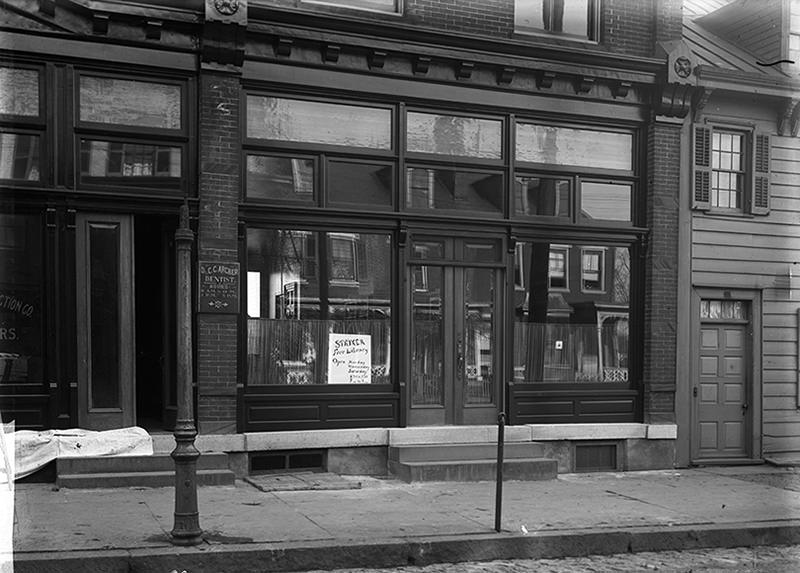 Stryker Library entrance, c. 1906 (From the collection of the Mercer Museum Library of the Bucks County Historical Society).
Stryker Library entrance, c. 1906 (From the collection of the Mercer Museum Library of the Bucks County Historical Society).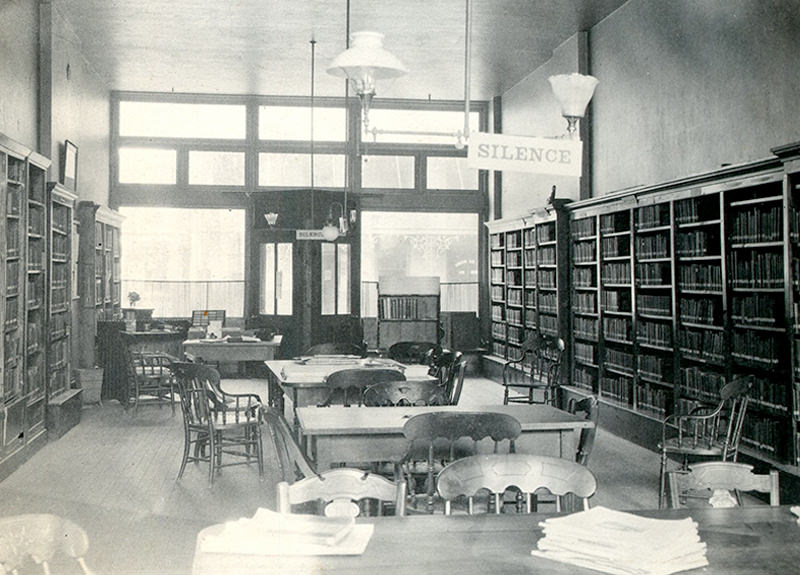 Stryker Library, c. 1906 (From the collection of the Mercer Museum Library of the Bucks County Historical Society).
Stryker Library, c. 1906 (From the collection of the Mercer Museum Library of the Bucks County Historical Society). Librarian Harriet Holcombe, c. 1906 (From the collection of the Mercer Museum Library of the Bucks County Historical Society)
Librarian Harriet Holcombe, c. 1906 (From the collection of the Mercer Museum Library of the Bucks County Historical Society)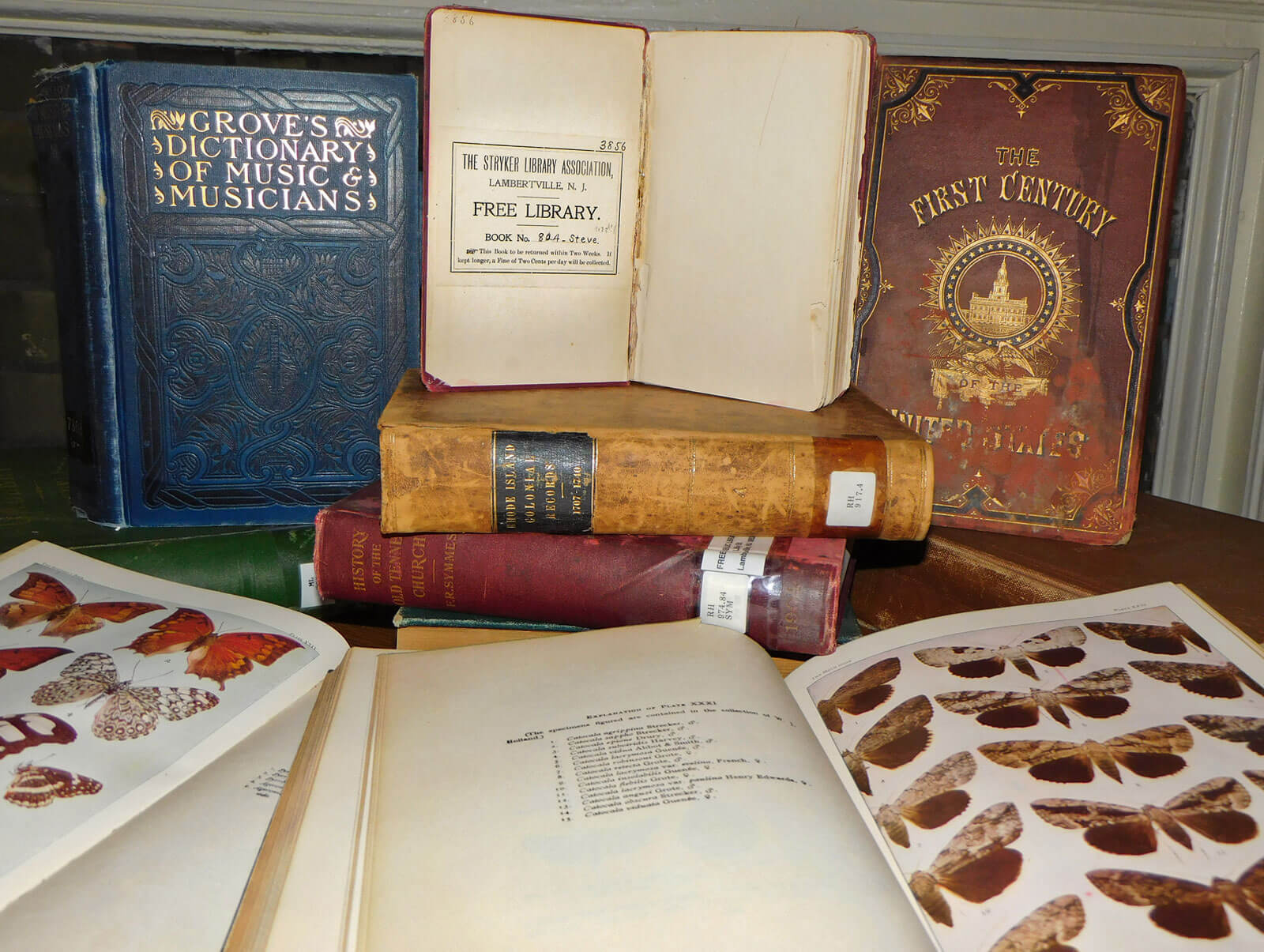
Remaining books from Stryker Library
In the early 1950’s, the library re-located to the second floor of City Hall on York Street, where it remained until late 1988 when the City needed the upstairs space and decided to move the library to its current location in the Lilly Mansion at 6 Lilly Street.
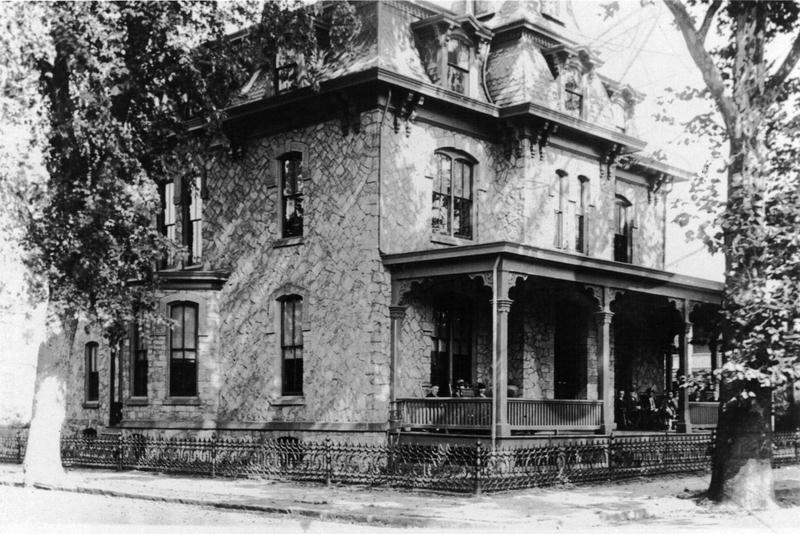 City Hall, c. 1920’s
City Hall, c. 1920’sHistory of Lilly Mansion, Home of the Library
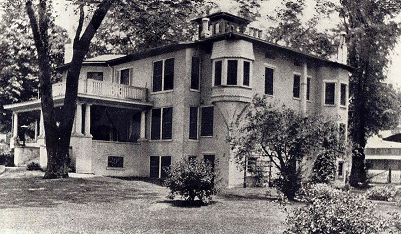 Lilly Mansion, c. (date)
Lilly Mansion, c. (date)The Lilly Mansion was built between 1812 and 1830 for Dr. John Lilly, who had bought the large parcel of land from Judge John Coryell, a son of Captain George Coryell of American Revolution fame. When Dr. Lilly died in 1848, the property passed to his nephew, Dr. Samuel Lilly (1815-1880), who was not only a successful doctor and surgeon but a respected statesman. In 1849, Dr. Lilly, having been instrumental in securing the charter incorporating Lambertville as a city, was elected as the City’s first mayor, followed in 1852 as a U.S. Congressman.
In 1861 President Buchanan appointed him as Consul-General to British India. Later he served as a judge in a county court and then a state court and as president of the Amwell National Bank, the Lambertville Water Company, and Centre Bridge Company, as well as a director of the Lambertville Gas Company and the Flemington Railroad.
Over the years, the Lilly Mansion lost its pond and stables and most of its land, which had extended from the newly established Bridge Street east to the cliff and south to Swan Creek. In the 1930’s, highway construction claimed most of the east side, and in 1946 the front lawn became the site of a service station; later, other subdivided lots to the south were sold. The increasingly neglected mansion served as the Moose Lodge, as apartments, and as the offices of the Hunterdon County Nutrition Project for the Elderly, until the City purchased the dilapidated building in 1980 and installed the library on the first floor in 1988.
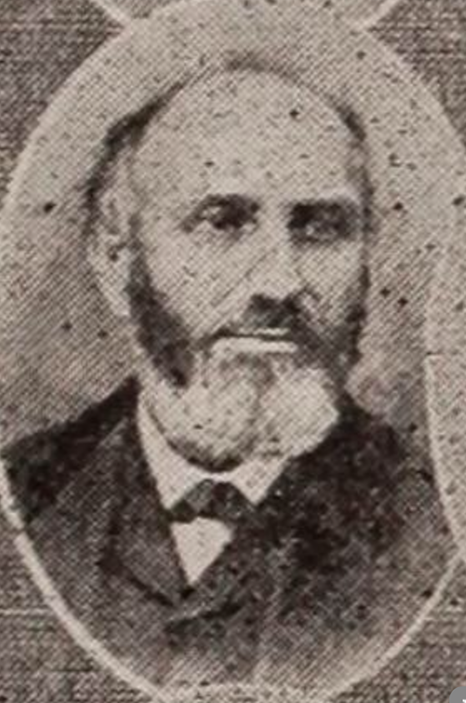 Dr. Samuel Lilly, 1853
Dr. Samuel Lilly, 1853A major restoration was completed in 1993, including an elevator and steel structural work to support books on the second floor, which had been unusable without heating or plumbing or even doorknobs.
